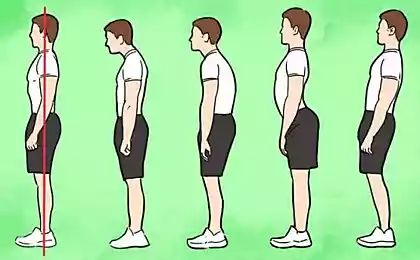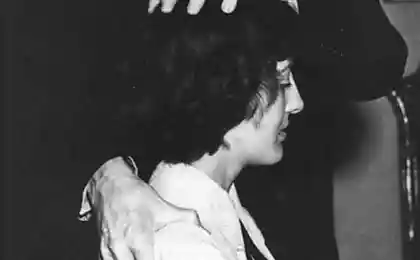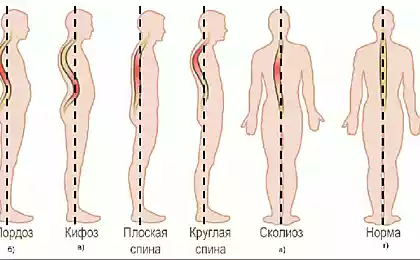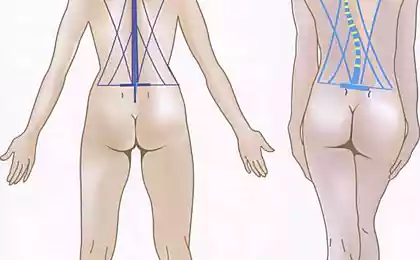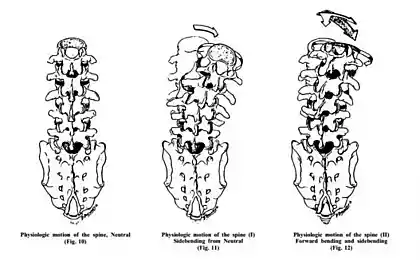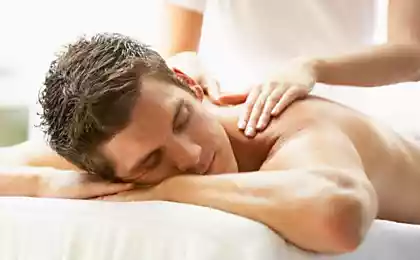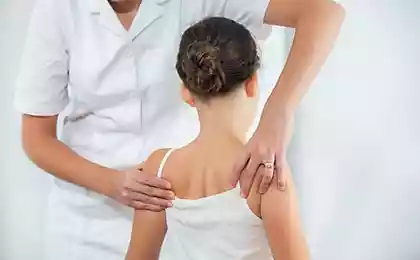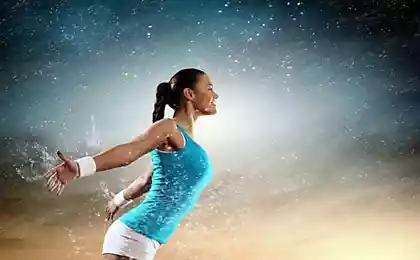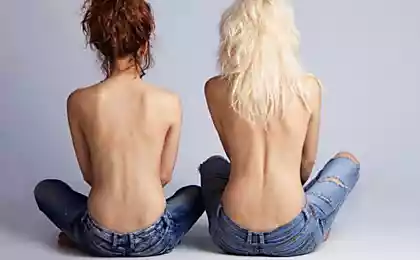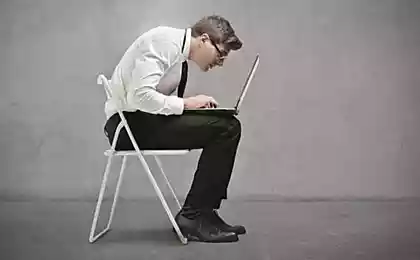616
The connection of TMJ and posture: postural phenomena
TMJ, or as they say these osteopaths, "TMJ" is actively involved in the adaptive posture. Consider postural phenomena related TMJ dysfunction. It is important to note that it is not necessarily about changes in the body, arising from disorders of the temporomandibular joint. We will try to describe the postural pattern, which blends harmoniously with TMJ dysfunction, and the cause of all this may be, as usually — anywhere.
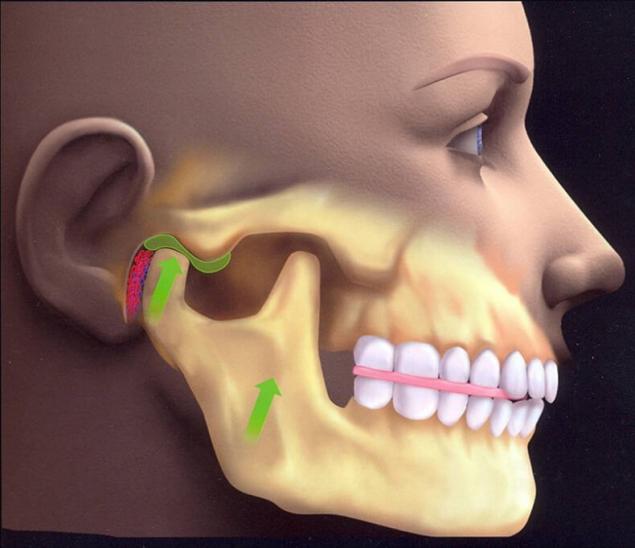
"TMJ dysfunction"
What is "TMJ"? As in all our osteopathy, where we don't like what bad moves, TMJ, we will not like one that bad move, i.e. hypomobile temporomandibular joint. Hypomobility the joint may be at different levels: ligaments, muscles, the joints, cranio-sacral rhythm, fascial, intraosseous restriction of mobility, and all the others.
The second TMJ in these cases usually makes up for hypomobility, and gradually stretched, loosened and become hypermobile. As a result, we will have a smile where one joint hypomobile and hypermobile second. The volume of traffic hypomobile TMJ less than hypermobile and therefore at the opening of the mouth will be asymmetrical: the lower jaw will not fall on the middle line, which is sad.

Fig. The right joint hypomobile left hypermobile.
Based on Guido Mazzoni (um 1445-1518), Kopf eines Franziskaners, Terrakotta, originale Fassung, Höhe 24,5 cm, Museo Dell Osservanza, Bologna.
Asymmetric movement of TMJ with a deviation of mandible when opening the mouth can be of two types:
1. Deviation is the deviation of the lower jaw from moving along the middle line, but on its return to the original straight axle in the final stage of mouth opening.
2. Delexe is also a deviation of the mandible, but without the return at the end of the middle line.
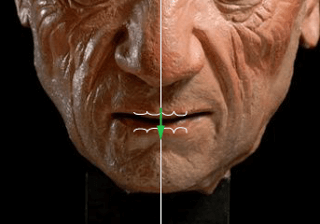
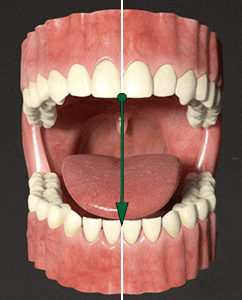
Fig. Under physiological opening the mouth the lower jaw descends in midline.
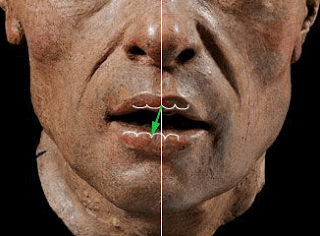

Fig. If refleksii during opening the mouth the lower jaw is rejected, and miraslava line goes in the middle.

Fig. When the deviation of the lower jaw deviates from midline, but then returns to her.
Posturale dysfunction of the temporomandibular joint included in the pathological adaptive posture. Further, other elements of this pathological posture.
It turns out that in most cases, the deviation (deviation, deflexa) lower jaw when mouth opening occurs in the direction of hypomobile TMJ — joint dysfunction. More rigid and slow-moving tissue region hypomobile TMJ do not allow the same freedom of movement and "pull to themselves" lower jaw. Some more primary dysfunction, manifested by hypomobility tissues in the TMJ is also often "pulls in on itself and other parts of the body.
Posture in the frontal plane
Cervical. At the level of cervical dysfunction TMJ corresponds to a tilt of the head in the direction of dysfunction and turn in the opposite direction from the TMJ side. The slope is mostly realised at the level C0-C1, and the rotation at the level of C1-C2. Dynamically the rotation of the head in the direction of TMJ will be limited, and in the opposite direction — free.
Of the shoulder girdle. At the level of the shoulder girdle is lifted the shoulder girdle and scapula on the side of TMJ dysfunction. Additionally, the arm on the side of the dysfunction will be functionally "strong," and on the opposite is "weak".

Fig. Posture dysfunction of the right temporo-mandibular joint: the head tilt to the right, turn left, lifting right shoulder girdle.
Pelvis. At the level of the pelvis is lifted cranially to the pelvic bone on the side of TMJ dysfunction. This starts the adaptation of the pelvis and legs, causing in turn a number of adaptive changes in the functional lengthening of the leg on the side of the "high" of the pelvic bone (so that the pelvic bone could be high).
In the image below, we see that the Cup from which drink the girl is the functional fulcrum for her posture. The body is built in an arc around the physiological functioning of the center — point of contact with the bowl. In a similar way there is an organization of posture and the pathological fulcrum around.
Fig. Adaptation of the pelvis is expressed in the rise of the right pelvic bone on the side of the dysfunction of the right TMJ.
On the basis of the Girl Drinking from a Shell, Edward McCartan, plaster garden figure, photographer Louis H. Dreyer, photograph from Archives and Special Collections, Smithsonian American Art Museum.
In the last example, the position of the head does not fit in the described up to this postural phenomena, so let's see it.
Posture in the sagittal plane
In the sagittal plane position of the lower jaw is also associated with posture.
The ventral, or front position of the lower jaw, or propulsion corresponds to a smoothing of the cervical lordosis, the position of the extension device of the occipital bone and the back type posture.
The dorsal position of the lower jaw corresponds to a deep cervical lordosis, flexional position of the occipital bone and a forward type posture.
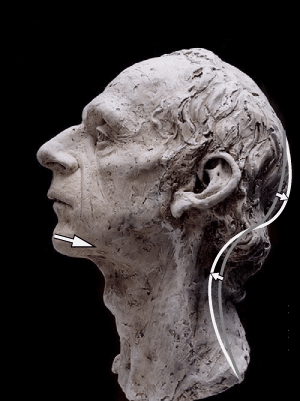
Fig. Deep cervical lordosis dorsalnogo corresponds to the position of the lower jaw.
On the basis of works by Suzie Zamit.
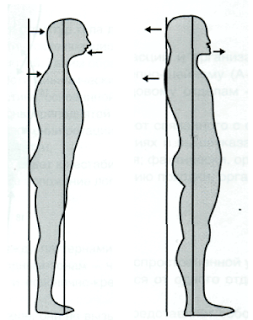
Fig. Front and rear types of posture in connection with the rear or front position of the mandible.
published
See also: UNIQUE technology for recovery after stroke
The relationship of internal organs and psychosomatic diseases
P. S. And remember, only by changing their consumption — together we change the world! ©
Source: osteopatbabkin.blogspot.ru/2015/08/TMJ-postura.html

"TMJ dysfunction"
What is "TMJ"? As in all our osteopathy, where we don't like what bad moves, TMJ, we will not like one that bad move, i.e. hypomobile temporomandibular joint. Hypomobility the joint may be at different levels: ligaments, muscles, the joints, cranio-sacral rhythm, fascial, intraosseous restriction of mobility, and all the others.
The second TMJ in these cases usually makes up for hypomobility, and gradually stretched, loosened and become hypermobile. As a result, we will have a smile where one joint hypomobile and hypermobile second. The volume of traffic hypomobile TMJ less than hypermobile and therefore at the opening of the mouth will be asymmetrical: the lower jaw will not fall on the middle line, which is sad.

Fig. The right joint hypomobile left hypermobile.
Based on Guido Mazzoni (um 1445-1518), Kopf eines Franziskaners, Terrakotta, originale Fassung, Höhe 24,5 cm, Museo Dell Osservanza, Bologna.
Asymmetric movement of TMJ with a deviation of mandible when opening the mouth can be of two types:
1. Deviation is the deviation of the lower jaw from moving along the middle line, but on its return to the original straight axle in the final stage of mouth opening.
2. Delexe is also a deviation of the mandible, but without the return at the end of the middle line.


Fig. Under physiological opening the mouth the lower jaw descends in midline.


Fig. If refleksii during opening the mouth the lower jaw is rejected, and miraslava line goes in the middle.

Fig. When the deviation of the lower jaw deviates from midline, but then returns to her.
Posturale dysfunction of the temporomandibular joint included in the pathological adaptive posture. Further, other elements of this pathological posture.
It turns out that in most cases, the deviation (deviation, deflexa) lower jaw when mouth opening occurs in the direction of hypomobile TMJ — joint dysfunction. More rigid and slow-moving tissue region hypomobile TMJ do not allow the same freedom of movement and "pull to themselves" lower jaw. Some more primary dysfunction, manifested by hypomobility tissues in the TMJ is also often "pulls in on itself and other parts of the body.
Posture in the frontal plane
Cervical. At the level of cervical dysfunction TMJ corresponds to a tilt of the head in the direction of dysfunction and turn in the opposite direction from the TMJ side. The slope is mostly realised at the level C0-C1, and the rotation at the level of C1-C2. Dynamically the rotation of the head in the direction of TMJ will be limited, and in the opposite direction — free.
Of the shoulder girdle. At the level of the shoulder girdle is lifted the shoulder girdle and scapula on the side of TMJ dysfunction. Additionally, the arm on the side of the dysfunction will be functionally "strong," and on the opposite is "weak".

Fig. Posture dysfunction of the right temporo-mandibular joint: the head tilt to the right, turn left, lifting right shoulder girdle.
Pelvis. At the level of the pelvis is lifted cranially to the pelvic bone on the side of TMJ dysfunction. This starts the adaptation of the pelvis and legs, causing in turn a number of adaptive changes in the functional lengthening of the leg on the side of the "high" of the pelvic bone (so that the pelvic bone could be high).
In the image below, we see that the Cup from which drink the girl is the functional fulcrum for her posture. The body is built in an arc around the physiological functioning of the center — point of contact with the bowl. In a similar way there is an organization of posture and the pathological fulcrum around.
Fig. Adaptation of the pelvis is expressed in the rise of the right pelvic bone on the side of the dysfunction of the right TMJ.
On the basis of the Girl Drinking from a Shell, Edward McCartan, plaster garden figure, photographer Louis H. Dreyer, photograph from Archives and Special Collections, Smithsonian American Art Museum.
In the last example, the position of the head does not fit in the described up to this postural phenomena, so let's see it.
Posture in the sagittal plane
In the sagittal plane position of the lower jaw is also associated with posture.
The ventral, or front position of the lower jaw, or propulsion corresponds to a smoothing of the cervical lordosis, the position of the extension device of the occipital bone and the back type posture.
The dorsal position of the lower jaw corresponds to a deep cervical lordosis, flexional position of the occipital bone and a forward type posture.

Fig. Deep cervical lordosis dorsalnogo corresponds to the position of the lower jaw.
On the basis of works by Suzie Zamit.

Fig. Front and rear types of posture in connection with the rear or front position of the mandible.
published
See also: UNIQUE technology for recovery after stroke
The relationship of internal organs and psychosomatic diseases
P. S. And remember, only by changing their consumption — together we change the world! ©
Source: osteopatbabkin.blogspot.ru/2015/08/TMJ-postura.html


